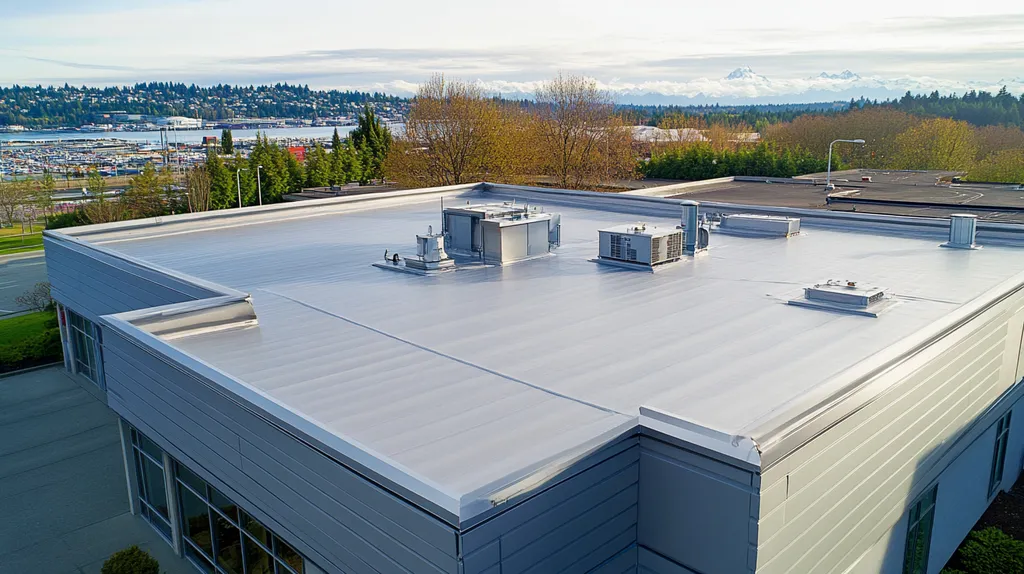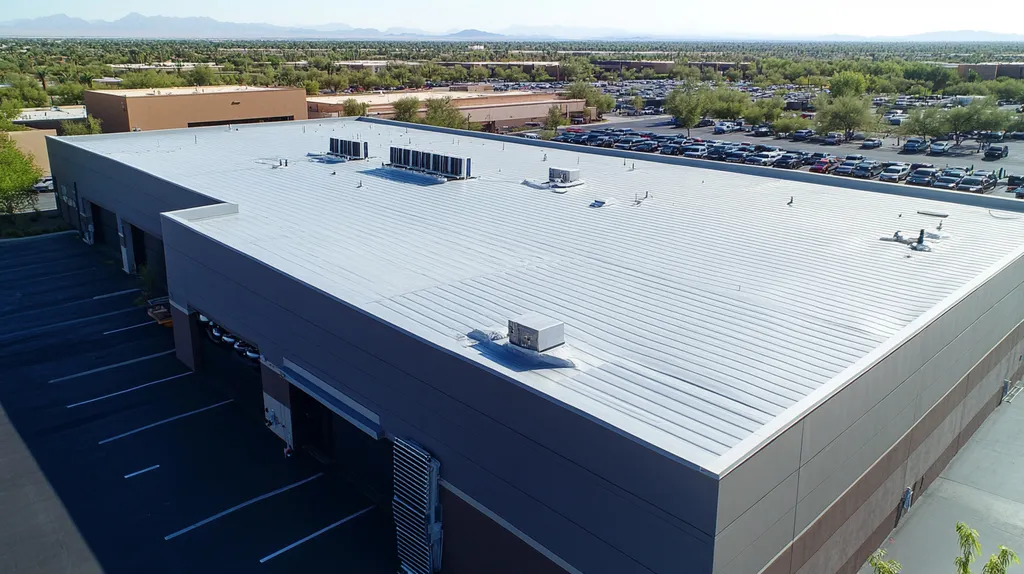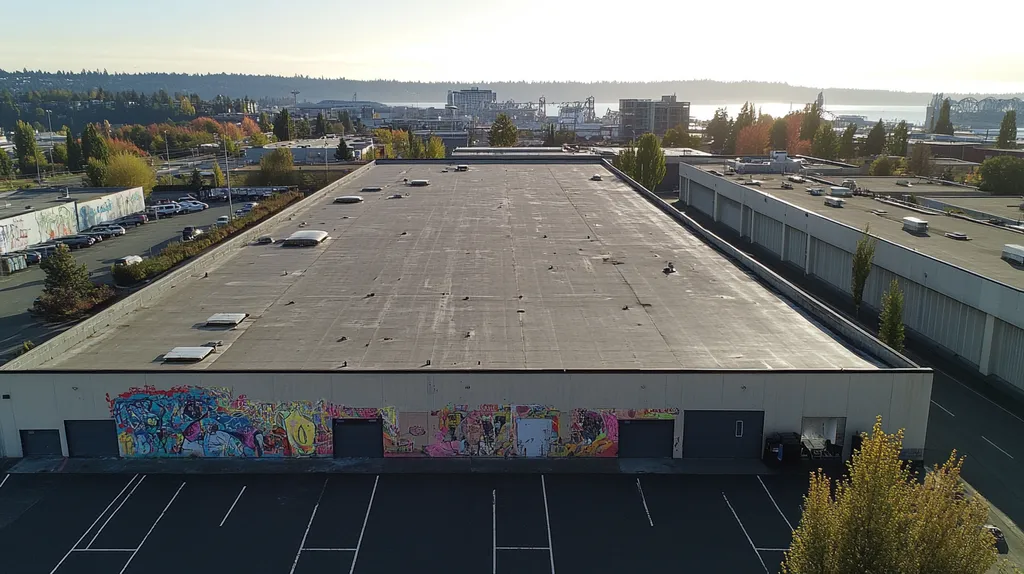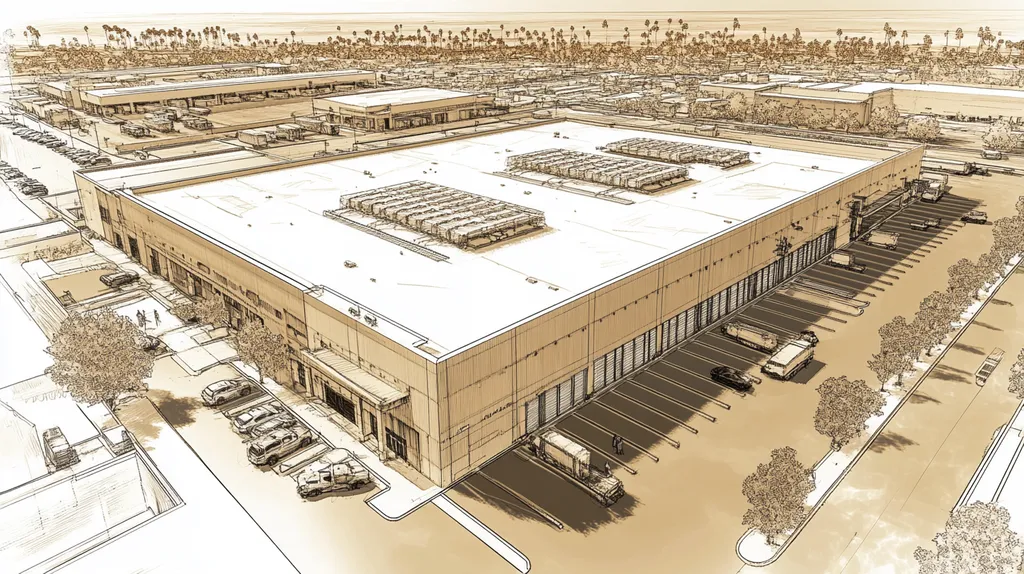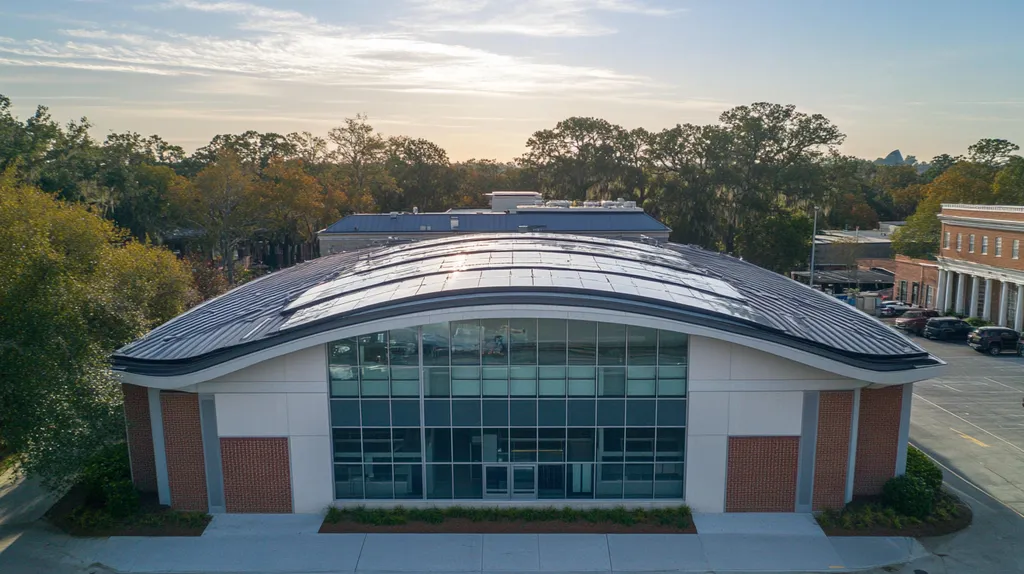Every year, commercial property owners lose millions due to preventable roof damage, with studies showing that 90% of premature roof failures stem from poor inspection practices. The average cost of emergency repairs reaches $15,000 – more than ten times the expense of routine maintenance.
For property professionals, establishing a systematic approach to roof inspection isn’t just about preventing leaks – it’s about protecting valuable assets and avoiding costly business disruptions.
This comprehensive guide breaks down critical inspection protocols, financial considerations, and risk management strategies that keep commercial roofs performing optimally while maximizing return on investment.
SECTION 1: PERFORMANCE FACTORS
When it comes to commercial roof inspections, timely evaluation is everything! Ignoring these inspections can lead to severe damage that not only costs a fortune but also diminishes the value of the building. Alarmingly, studies indicate that hidden failures affect up to 20% of flat roof systems, failures that routine maintenance could easily catch. To safeguard investments, property owners and facility managers must prioritize checks of membrane integrity, drainage systems, and flashing conditions to avert costly repairs and prolong the lifespan of their roofs.
Membrane Integrity and Surface Condition Assessment
The roofing membrane is the unsung hero of flat roof systems, playing a pivotal role in overall performance. During inspections, it’s essential to be on the lookout for signs of distress, like cracking, blistering, or seam separations. These issues not only signal wear but also heighten the risks of water intrusion, which can wreak havoc inside the building, leading to costly mold growth and structural damage.
Equally important is checking for debris on the roof surface. Accumulating leaves and other materials can create moisture traps that deteriorate the membrane and pave the way for leaks. Often, these situations remain hidden until they spiral into extensive, expensive issues.
Incorporating advanced methods, such as infrared thermography, can be a game-changer; it reveals temperature variations that indicate compromised areas in the membrane. By adopting this proactive approach, property professionals can nip small concerns in the bud, ultimately extending the roof’s lifespan. Another vital step is documenting the membrane’s condition, as this creates a maintenance history that can guide future inspections and repairs. Without such records, crucial warning signs might be overlooked, leading to unanticipated expenses.
Key Action Items
Drainage Efficiency and Ponding Water Identification
Efficient drainage is non-negotiable for maintaining the integrity of flat roofs. Stagnant water, known as ponding, is a roof’s worst enemy—it can lead to significant structural damage and elevate leak risks. Thus, inspections should prioritize drain locations, ensuring they’re free from blockages and operating effectively.
Property managers must pay close attention to signs of ponding water following heavy rains. Evaluating the extent and duration of pooling water is crucial; prolonged standing water can compromise roofing materials, drastically reducing their longevity and effectiveness.
A proper slope is also vital for effective drainage. Checking the roof’s grade ensures that water flows seamlessly toward designated drainage points. If the slope falls short, corrective measures like installing tapered insulation may be necessary to avoid future headaches. Regular inspections will help identify blockages in drains or scuppers, making maintenance and cleaning essential steps for preventing dangerous water buildup.
Key Action Items
Flashing and Roof Penetration Inspection Protocols
Flashing may not get the spotlight, but its condition is vital for sealing roof penetrations like vents, HVAC units, and skylights. During inspections, it’s crucial to look for gaps, cracks, or looseness that might jeopardize the watertight integrity of the roof. Over time, wear and tear can make these seals susceptible to leaks.
Property professionals should also scrutinize caulking surrounding these penetrations. Aging caulk can shrink or crack, opening the door to potential water infiltration. Therefore, timely resealing can greatly enhance the overall integrity of the roof and help avoid unexpected repair bills.
Additionally, keeping an eye on metal flashings for rust or corrosion is essential, as these materials are prone to oxidation over time. Replacing any corroded components not only maintains effective sealing but also minimizes leak risks. Regular inspections of these critical areas can significantly reduce the chances of severe water damage, ensuring the building remains protected while enhancing the roof’s performance.
Key Action Items
SECTION 2: FINANCIAL CONSIDERATIONS
When it comes to roofing, ignoring inspections and routine maintenance can lead to hefty financial consequences. Studies reveal that neglect can leave up to 70% of roofing issues unaddressed, often spiraling into expensive repairs or premature roof replacements. Adopting a proactive maintenance approach is crucial for property owners and facility managers to safeguard against these financial pitfalls while ensuring the longevity of their roofs.
Cost Analysis of Preventive Maintenance Versus Repairs
The financial difference between preventive maintenance and surprise repairs is nothing short of staggering. Consider this: for every dollar spent on proactive upkeep, property owners could save as much as five times that amount in future repairs. Simple steps such as routine inspections can dramatically extend the lifespan of a flat roof.
Many building owners mistakenly think that by skipping regular maintenance, they’re saving money. Unfortunately, this often backfires as unnoticed leaks or structural problems emerge, leading to repair costs that skyrocket into the thousands. Addressing issues early on is not only a cost-effective strategy but a necessary one to prevent future expenses.
Consistently investing in a scheduled maintenance program helps catch minor issues before they escalate into major headaches. Understanding this cost-benefit relationship empowers property managers to commit to a maintenance strategy that supports their budget and long-term roofing goals. The risk of neglect is simply too high to overlook.
Key Action Items
Budgeting for Inspection, Maintenance, and Replacement
Constructing a sound budget for roofing needs hinges on understanding the costs tied to inspections, maintenance, and eventual replacements. Property owners should earmark about 1-2% of the building’s total value each year specifically for roof maintenance; this approach can avert costly emergencies down the road.
Regular inspections must be the foundation of any roofing budget. These assessments not only aid in planning for upcoming maintenance but also play a crucial role in making larger decisions, such as when to replace the roof entirely.
It’s essential for facility managers to anticipate unexpected expenses from neglecting regular upkeep. A thoughtful budget should encompass both routine maintenance and potential repairs, ensuring that disruptions don’t derail operations.
Key Action Items
Evaluating Return on Investment for Roof Upgrades
When considering roofing upgrades, property owners must carefully assess the potential return on investment (ROI). Upgrading to higher-quality materials or energy-efficient systems often yields significant long-term savings—upgraded insulation alone can reduce energy costs by as much as 30%.
Additionally, many energy-efficient roofing options are eligible for rebates or tax incentives, further increasing ROI. These financial incentives can help offset the initial costs associated with upgrades, making them a savvy investment.
To fully appreciate the value of roof upgrades, it’s crucial to understand their positive impact on property values. A well-maintained, modern roof not only saves on operational costs but also enhances a building’s appeal and marketability.
Key Action Items
SECTION 3: COMPLIANCE REQUIREMENTS
Staying compliant with warranty and manufacturer specifications is not just a guideline—it’s essential for keeping a commercial roof in peak condition. Ignoring these requirements could lead to hefty repair bills and a decrease in property value. In fact, many warranties become void if routine inspections are skipped. This section will break down critical compliance factors, from adhering to local building codes to ensuring proper documentation for insurance purposes.
Adherence to Warranty and Manufacturer Specifications
Every commercial roof comes with specific warranties designed to protect the owner’s investment. Many of these warranties require property managers to conduct regular inspections and maintenance—often at least twice a year—to remain valid.
Neglecting these obligations can void warranties, exposing property owners to unexpected repair costs when problems arise. Following these guidelines not only prolongs the roof’s lifespan but also minimizes the risk of emergencies.
Keeping thorough records of inspections, maintenance activities, and repairs can significantly bolster claims when issues arise. This documentation is invaluable for both warranty claims and future maintenance strategies, fostering a trusting relationship with roofing contractors.
Key Action Items
Meeting Local Building Codes and Industry Standards
Local building codes are established to guarantee safety and compliance; therefore, ignoring them can have dire consequences. Each locality has specific codes addressing roofing materials, installation methods, and safety protocols. For instance, commercial roofs in some areas may be required to use energy-efficient materials.
Non-compliance can result in fines, work stoppages, and significant delays, potentially endangering the building’s overall integrity. That’s why facilities managers must stay updated on local regulations as an integral part of their compliance efforts.
Additionally, adhering to industry standards set by organizations like ASTM or ASHRAE is essential. Compliance boosts safety and enhances building performance, making properties more attractive to potential tenants and buyers.
Key Action Items
Documentation and Reporting for Insurance Purposes
Comprehensive documentation of all roofing activities is critical for insurance claims. Property owners should keep meticulous records of inspections, maintenance, and repairs, as insurers typically require proof of regular upkeep when processing damage claims.
A commercial structure that experiences storm damage may struggle to receive fair compensation if there’s insufficient documentation demonstrating compliance with maintenance schedules. Detailed records and reports can substantiate claims and streamline the claims process.
Moreover, a well-organized documentation system supports insurance conditions and assists in monitoring the roof’s performance over time. Utilizing technology, such as mobile applications for real-time documentation, can greatly simplify record-keeping.
Key Action Items
SECTION 4: RISK MANAGEMENT
Effective risk management is a cornerstone of flat roof maintenance. Failing to conduct thorough inspections can unveil hidden dangers, from costly repairs to serious safety hazards. According to the National Roofing Contractors Association, leaks are among the most common issues faced in commercial buildings, underscoring the importance of proactive risk assessments.
Identifying and Prioritizing Roof Vulnerabilities
Property owners should regularly assess their roofs for vulnerabilities to prevent significant damage. Watch for telltale signs like membrane punctures, worn flashings, and clogged drainage systems. Conducting regular inspections enables property managers to catch these issues before they develop into costly repairs.
Prioritizing known vulnerabilities is crucial. High-traffic roof areas or spots near mechanical equipment often require closer monitoring and more frequent check-ups. By focusing on risk factors specific to these locations, facility managers can allocate resources wisely.
Integrating advanced technologies like infrared thermography enhances vulnerability detection, revealing hidden moisture not visible during standard inspections. Such early detection can save property owners thousands in emergency repairs.
Key Action Items
Safety Protocols for Inspection and Maintenance Personnel
The safety of inspection personnel is paramount. Slips and falls account for a large percentage of workplace accidents. To mitigate these risks, it’s important to establish strict safety protocols and equip workers with appropriate safety gear.
Training staff on safe inspection practices is vital. Workers should learn how to use safety harnesses effectively and maintain three points of contact when climbing. Reinforcing these standards cultivates a safety-first culture that reduces accidents.
Open communication among team members during inspections is crucial. Daily safety briefings can highlight potential hazards and ensure team members understand safety measures in place. Awareness is key to reducing risks on the job site.
Key Action Items
Mitigating Water Infiltration and Structural Damage Risks
Water infiltration remains a major threat to flat roof systems, leading to structural damage and mold growth that can devalue properties. Regular checks of drainage systems are essential to minimize this risk.
Keeping gutters and downspouts clean ensures water flows off the roof effectively. Regular blockages can lead to standing water, increasing leak risk. Implementing routine cleaning should be a cornerstone of any maintenance plan.
Investing in high-quality materials during repairs or renovations significantly enhances a roof’s water resistance. Choosing durable membranes and superior sealing methods is vital in safeguarding against future infiltrations.
Key Action Items
SECTION 5: OPERATIONAL PROCEDURES
Effective roof maintenance is critical for safeguarding assets and avoiding hefty repair bills. Surprisingly, nearly 50% of roofing failures arise from inadequate maintenance, as noted by the National Roofing Contractors Association. Instituting clear operational procedures is pivotal for minimizing repair costs and maximizing the lifespan of flat roof systems. This section focuses on essential procedures for conducting routine inspections, managing rooftop access, and coordinating timely repairs, enabling property owners and facility managers to keep their roofs in top shape.
Establishing Routine Inspection Schedules and Checklists
Creating a thorough inspection schedule is foundational for proactive roof maintenance. Ideally, inspections should happen at least twice a year and after significant weather events. A detailed checklist can guide inspectors to focus on critical areas such as flashings, seams, and drainage systems.
Additionally, systematic documentation of findings is essential. This record serves as a historical reference that aids in future maintenance planning. Recognizing patterns and recurring issues allows property managers to make well-informed decisions.
Property owners should also consider seasonal assessments aligned with weather changes. For example, checking drainage systems in spring is a proactive measure to prevent water pooling during summer rains.
Key Action Items
Rooftop Access Control and Activity Logging
Controlling rooftop access is vital for protecting both the roof’s integrity and overall safety. Unauthorized access can lead to damage or dangerous situations, which are often costly to address. Property owners should develop a clear roof access policy, defining who can enter and under what conditions.
Activity logging is an important part of this control. Keeping detailed records of who accessed the roof and when can help identify any potential issues arising from unauthorized activities. This level of transparency encourages accountability among users.
Using technology such as RFID or keycard systems can further enhance access management. By regularly reviewing access logs, property managers can spot trends or irregularities that require attention. Effective access control and diligent logging prevent unnecessary wear and tear on roofs.
Key Action Items
Coordinating Repairs and Post-Service Roof Evaluations
Once inspection issues are identified, prompt coordination of repairs is essential. Addressing problems quickly can help prevent small concerns from becoming major headaches. Property managers should prioritize repairs based on severity and their potential operational impact.
After repairs are completed, conducting a post-service roof evaluation is critical. This step ensures that the repairs were done correctly and that no new issues have surfaced. It’s also an opportunity to update maintenance records and adjust future inspection strategies based on recent experiences.
Engaging qualified roofing professionals for both repairs and evaluations is vital for overall effectiveness. These experts bring the necessary knowledge and tools to tackle the issues comprehensively. Establishing a partnership with a reliable contractor ensures quick and efficient handling of roof concerns.
Key Action Items
SECTION 5: OPERATIONAL PROCEDURES
Effective roof maintenance is pivotal not just for protecting assets but also for avoiding those dreaded surprise repair bills. Shockingly, nearly 50% of roofing failures can be traced back to poor maintenance practices, according to the National Roofing Contractors Association. By establishing robust operational procedures, property owners and facility managers can mitigate expenses and ensure the long-term performance of their flat roof systems. This section delves into the crucial processes for conducting regular inspections, managing rooftop access, and coordinating repairs promptly.
Establishing Routine Inspection Schedules and Checklists
Creating a reliable inspection schedule is fundamental for proactive roof maintenance. Aim to conduct inspections at least twice a year, and always after significant weather events. Equipping inspectors with a detailed checklist will help focus on critical areas like flashings, seams, and drainage systems.
Documenting findings consistently is equally important. This creates a historical record that informs future maintenance decisions. Spotting patterns of recurring issues allows property managers to take informed, strategic actions.
Besides routine inspections, incorporate seasonal checks aligned with changing weather conditions. For instance, inspecting drainage systems in the spring can prevent water pooling when summer storms hit.
Lastly, involve all relevant stakeholders. Educating staff on their roles in roof maintenance cultivates a culture of shared responsibility and enhances overall efficiency.
Key Action Items
Rooftop Access Control and Activity Logging
Controlling who accesses the roof is vital for maintaining its structural integrity and safety. Unauthorized access can result in both damage and safety hazards that can be expensive to remedy. A clear access policy should be developed, detailing who is allowed to enter the rooftop and under what circumstances.
Additionally, implementing activity logging is an important facet of access control. Keeping detailed records of who accesses the roof and when can help identify potential issues or damages arising from unauthorized access. This level of transparency fosters accountability and reinforces security.
Utilizing technology such as RFID tags or keycard systems can further streamline access management. Regularly reviewing access logs can signal trends or unusual activity, enhancing overall oversight.
By combining stringent access controls with meticulous activity logging, properties enhance safety and protect the roof from unnecessary wear and tear.
Key Action Items
Coordinating Repairs and Post-Service Roof Evaluations
After identifying issues during inspections, swift coordination of repairs is crucial. Addressing problems promptly can stop minor concerns from escalating into expensive headaches. Property managers should prioritize repairs based on their severity and potential impact on operations.
Once repairs are completed, conducting a post-service roof evaluation is essential. This ensures that work was executed correctly and no new issues have surfaced. It also provides an opportunity to update maintenance records and refine future inspection schedules based on the latest findings.
Engaging qualified roofing professionals for both repairs and evaluations greatly enhances overall effectiveness. These experts have the necessary expertise and tools to comprehensively address various issues.
Finally, building a partnership with a trusted roofing contractor can streamline the repair process. A contractor familiar with the property’s roof can quickly identify and resolve concerns, enhancing long-term roof performance.
Key Action Items
The Bottom Line
With 90% of premature roof failures stemming from poor inspection practices and average emergency repairs costing $15,000, the stakes for proper commercial roof maintenance couldn’t be higher.
Regular inspections serve as the cornerstone of roof longevity, protecting both the physical asset and the bottom line.
By implementing systematic inspection protocols, maintaining detailed documentation, and following manufacturer specifications, property owners can extend their roof’s lifespan by up to 50%.
The future of commercial roofing lies in proactive maintenance strategies that combine traditional inspection methods with emerging technologies like infrared scanning and drone surveys.
Investment in preventive maintenance today safeguards against catastrophic failures tomorrow, making regular roof inspection not just a best practice, but a business imperative.
FREQUENTLY ASKED QUESTIONS
Q. Why is inspecting membrane integrity critical for a commercial roof?
A. The membrane keeps water out and ensures the structure’s safety. Regular inspection helps catch early signs of wear, like cracking or blistering, which can lead to leaks and severe damage if ignored.
Q. How can ignoring commercial roof maintenance affect finances?
A. Skipping maintenance often leads to severe, costly repairs later on. Owners might save initially but face skyrocketing expenses when leaks or structural problems arise, making regular care a financially wise choice.
Q. What happens if a commercial roof warranty isn’t followed?
A. Not adhering to warranty specifications can void it, leaving you responsible for expensive repairs. Routine inspections and maintenance are essential to maintain the warranty and ensure the roof’s longevity.
Q. How can roof vulnerabilities impact commercial property safety?
A. Ignoring vulnerabilities like punctures and clogged drains can lead to water damage and mold growth, posing safety hazards. Regular assessments allow for early detection and correction, safeguarding both property and occupants.
Q. What role does documentation play in commercial roof management?
A. Keeping detailed records helps with insurance claims and future inspections. Accurate documentation of maintenance activities ensures compliance, reinforces accountability, and supports proactive decision-making regarding roof management.
Q. What should be done to control rooftop access effectively?
A. Implement clear access policies and use control systems, such as keycards. Documentation of rooftop access can help track unauthorized entries, preserving the roof’s integrity and ensuring safety.
Q. How do I prepare for emergency roofing situations?
A. Create a leak response plan and maintain contacts with emergency roofing services. Train staff on recognizing leaks quickly to mitigate water damage and ensure safety, keeping your property protected during crises.

